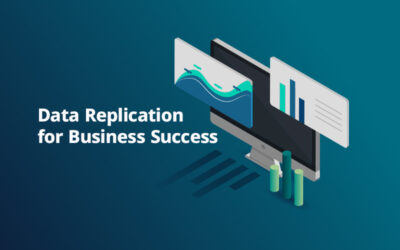High-quality, accurate, and relevant data is essential for businesses to make informed decisions. In today’s data-driven business environment, data quality plays a vital role in precise decision-making and overall organizational performance. Reliable and accurate data empowers businesses to make wise choices, enhance customer relationships, streamline processes, and gain a competitive edge. Utilizing data cleansing services is a practical strategy to eliminate errors, inconsistencies, and duplicates from datasets and maintain data quality.
What is Data Quality and Why is it Important?
Data quality refers to the extent to which data is effective for a specific purpose, meaning that it should contribute to the intended outcomes of its collection. For example, flawed marketing datasets are ineffective for their intended use, rendering them an example of poor data quality. Various factors, such as accuracy, completeness, consistency, timeliness, validity, and uniqueness, influence data quality. Data managers rely on these factors to assess data quality levels, identify errors, and ascertain whether the data is suitable for the given task.
Data quality has gained paramount importance due to organizations relying on data to facilitate decision-making processes. It is indispensable because it ensures the precision, completeness, and reliability of the information pivotal for making critical business decisions. Upholding data quality is imperative throughout the entire data management lifecycle. Inaccurate analytics, financial losses, ineffective business strategies, and operational errors often stem from low-quality data. Access to high-quality data enables businesses to expedite data analysis, execute targeted marketing campaigns, and devise robust strategies with greater efficiency. This, in turn, leads to more focused marketing efforts and an enhanced return on investment. Additionally, high-quality data can reduce risks, expenses, and enhance workforce productivity, besides improving the overall dataset. With quality data at their disposal, marketers and data managers can dedicate more time to leveraging data for its intended purpose and less time on identifying and rectifying data-related issues. Furthermore, by utilizing quality data, businesses can engage with customers more effectively, ensuring that the contacts in their database represent genuine, active individuals, while also safeguarding their brand from potential harm.
Effective Strategies to Ensure Data Quality
A data quality strategy outlines the systems and processes needed to integrate data quality into every facet of business operations, guaranteeing the usage of trustworthy data across the entire organization. A results-oriented strategy comprehends the business’s objectives, goals, procedures, endeavors, and potential for enhancing data quality while upholding its integrity. In this context, data cleansing services prove invaluable as they aid organizations in formulating a data quality strategy that aids in identifying, rectifying, and preventing quality issues, thereby establishing a more robust foundation of dependable data.
Here are some effective strategies to enhance data quality:
- Establish business needs and evaluate impact: Initiatives for data quality improvement are driven by well identified business needs. Begin by prioritizing these concerns based on their significance to your business and their potential long-term impacts. This approach facilitates the establishment of attainable objectives and ensures the progress of quality improvement initiatives. Continual reference to organizational needs provides the necessary context for adapting your approach to data quality.
- Understand your data: Knowing your data is essential since not all data is created equal and not all information is pertinent to your organization. Organizations require the “right” data to build a stronger foundation. “Right” data is also that which is “right” for users. To assess whether your data is “right” or pertinent for your intended business use case, you should be aware of what it contains, where it came from, how to extract value from it, and other relevant information. Data intelligence is the ability to correctly comprehend the data and utilize it. The best way to improve data quality is to accurately describe and link the dots (in this case, the data) throughout its path.
- Address the root causes of data quality issues: Problems with data quality are frequently temporarily rectified so as not to interfere with work. For instance, what do data scientists do when they discover blank items in the datasets they have chosen? They will probably correct those mistakes in their copy before continuing with the data processing and analysis. Although the adjustments do not make it to the source, the original dataset still contains those quality problems, which will have an adverse effect on how it is used in the future. As the saying goes, “prevention is better than cure,” and stopping the spread of dirty data is necessary to raise the quality of your data.
- Use tools and methods for normalization: Users occasionally make mistakes when entering data onto various forms, particularly when spelling things incorrectly. For instance, they might hastily enter “treu” instead of “true” and then forget about it. However, selecting such inaccurate entries for analysis can significantly lower the quality of your data. Utilizing a defined set of values whenever possible eliminates the possibility of people making these kinds of errors. Additionally, a skilled data formatting business makes use of right-fit normalization tools and techniques to fix discrepancies and errors and improve dataset quality.
- Data governance: In a data-driven organization, each employee needs to recognize their contribution to improving data quality. Create a widely accepted definition of high-quality data that is communicated throughout the organization, establish distinct measurements, monitor those specified metrics over time, and correct errors. Businesses can implement data governance practices to improve the quality of their data management while standardizing it.
- Utilize DataOps to innovate: DataOps is a collaborative approach that combines data engineering and data integration to streamline the entire data lifecycle, from data acquisition and preparation to analysis and deployment. It emphasizes automation, collaboration, and agility in managing and delivering data to support analytics and decision-making.
- Concentrate on regular training: A data-driven culture ensures that everyone in the organization will support high data quality. At the same time, it’s critical to maintain their involvement and/or interest through creative thinking. The need for and advantages of using high-quality data can be reinforced and highlighted through ongoing training in concepts, measurements, and tool usage; conversely, sharing success stories and escalating quality problems across the business can serve as pleasant reminders.
- Prevent potential data errors: Maintaining data quality requires not only correcting mistakes that have already been made but also avoiding potential mistakes. The objective is to identify and address the fundamental causes of data quality issues inside a firm. To maximize return on investment, incorporate data quality best practices into company procedures.
Leverage our data cleansing services for accurate, consistent, and trustworthy data that fuels success.
Data quality serves as the cornerstone of efficient corporate operations and informed decision-making. To thrive and maintain a competitive advantage, it is crucial for businesses to employ data cleansing services, ensuring the accuracy and reliability of their data. Reaching out to a reliable business process outsourcing company can help your business implement best practices to unlock the full potential of your data assets.




